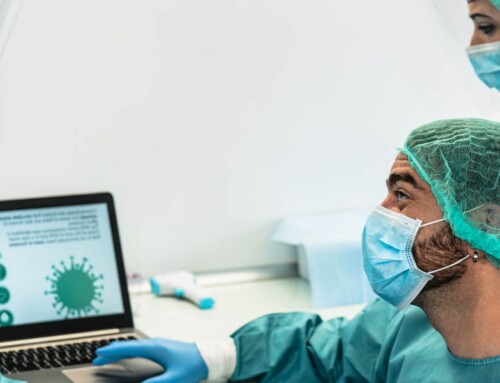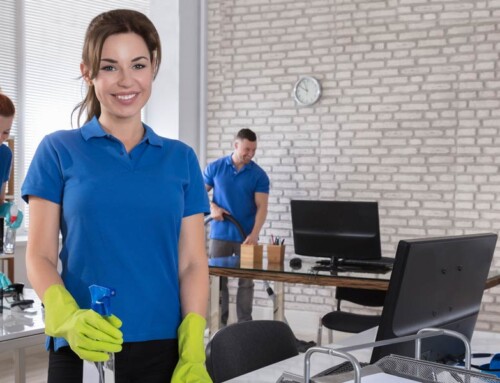Science-Proven Microbial Control®
In the past, cleaning was more about appearances. Removing noticeable dust, dirt, and grime was sufficient. After almost two years of dealing with this pandemic, sharing an indoor space with others may still make us a bit nervous. We now may pause and think twice when going to open a door, push an elevator button, or make contact with any other commonly touched surfaces, for fear of contamination.
While pandemics have cropped up time after time throughout history and viruses have continued to mutate, science also catches up. Science continues to advance and evolve to fight the risk of infection, with data as proof of its ability.
The founders of Science-Proven Microbial Control® (SPMC) saw the necessity of re-engineering cleaning services for the well-being of all—occupants, customers, building managers, and even the cleaning staff. So, what were their results? Let’s start at the beginning.
Evolution of cleaning for health
In 2011, Greg Theroux, now CEO of SPMC, founded the company Heritage Building Maintenance, out of Des Moines, Iowa. He foresaw it as a commercial cleaning company that offered undeniable solutions to large businesses. As Theroux experienced favorable growth, Joe Johnson, now technical director of SPMC, traveled the country as a consultant, learning about both antimicrobial residual chemistry and adenosine triphosphate (ATP) technology.
Theroux then teamed up with Johnson, and together they collaborated on a Cleaning for Health program that was beta tested and refined over the last 10 years. This scientifically proven healthy cleaning program evolved to what is now known as MicrobXTM, an antimicrobial touchpoint program. This program was created to make buildings healthier in between cleanings and disinfections with data-verified, touch-safe protection, and done cost-effectively. It gives peace of mind.
The parent company of MicrobX, SPMC, was created in 2020 to separate that operation from the legacy company, Heritage Building Maintenance. This separation also opened the door to reach out to other building service contractors (BSCs) as licensees for the program. As we are all aware, 2020 was an unusual year for everyone, and the launch began in earnest in 2021. Today there are five license agreements in place and more in the works.
Johnson explains, “The beauty of the MicrobX program for licensees is the high profit, repeat business it provides. Our capacity to add licensees is limited only by geography. We are working with our licensees to limit competition between licensees in common territory, but are open to almost any arrangement that benefits licensees and SPMC. We believe firmly that the program will be a key element of future cleaning protocols.”
Why the need for MicrobX?
“At SPMC, we believe the built community is going to be required to demonstrate how they are addressing the health and safety of building occupants in real and measurable ways,” says Johnson. “We see a trend taking place that is very evident in the current climate. Evidence of this is found in various surveys and articles addressing this subject.”
The Bradley Corp. queried 1,035 American adults August 3—10, 2021, about their handwashing habits, concerns about the coronavirus, and their return to the workplace. A subset of 513 respondents who work in offices were identified and asked a series of applicable questions. Participants were from around the country and were evenly split between men and women.
In conducting its Healthy Handwashing Survey™, Bradley found that coronavirus concerns persist, especially as new variants emerge, finding that 73% of office workers worry about getting the coronavirus versus 67% of the general population. In response, employees are taking preventive actions. 86% are bringing a mask with them to work, and 73% have been fully vaccinated. In addition to masks, office workers are packing a few other personal protection items: 66% have their own hand sanitizer, 39% are taking cleaning wipes, and 29% are prepared with disinfectant spray.
As workers head back to the office, the Healthy Handwashing Survey found they are packing personal protection items. “Office workers are returning to the workplace cautiously—particularly now with the prevalence of the delta variant—and are personally taking steps to avoid germs and the virus,” says Jon Dommisse, vice president of marketing and corporate communication at Bradley Corp. “The coronavirus has notched up the need for cleaner workspaces, limited contact, and increased handwashing.”
In a recent FORBES article regarding an employee’s transition from remote work, it states that a clean office environment will help them feel at ease. And this goes beyond general tidying. Sanitizing shared surfaces should become a daily practice. It includes wiping down surfaces like door handles, conference tables, and kitchen counters frequently throughout the day. It is essential to schedule daily bathroom cleanings (or more often if needed). It’s also worth keeping extra sanitizing wipes around the office so employees can wipe down surfaces as required.
Liviu Tudor, the president of the European Property Federation (EPF) in Brussels, aims to go one step further and ensure standards are met for COVID-safe workplaces. He has developed the IMMUNE Building Standard, which includes over 100 measures designed to ensure that organizations provide a safe workplace for employees as they return to the office.
The standards include measures such as temperature scanning in the entrances of buildings, antimicrobial paint to prevent the spread of bacteria, and contactless access points to lifts, offices, and so on. “People have to feel more confident that the workplace will be safer for them than they will be at home,” Tudor says. “We already have green buildings, but we want to work towards healthy buildings as well.”
At SPMC, they have seen a trend in that commercial spaces must offer added value to stay competitive now that the employees of companies are more comfortable with working from home. Keeping their staff healthy is a high priority for organizations. This can be accomplished with measures like improved air quality, building automation, and taking advantage of innovations in controlling the spread of germs. Commercial real estate developers can also seek certifications like Leadership in Energy and Environmental Design (LEED) and WELL, to stand out among competitors. A clean and healthy work environment will help facilitate a more productive workforce, reducing absenteeism and improving creativity in a relaxed atmosphere.
Utilizing time tested EPA registered chemistry, the newest technology for thorough application and validation testing, as well as digital communication tools for quickly and efficiently disseminating information to the occupants via their smartphone, SPMC’s MicrobX™ antimicrobial touchpoint program addresses the concerns related to occupant health, sustainability, cost containment, and ongoing innovation.
“We have positioned ourselves to not only address the current needs of occupant health and safety, but also to explore the needs of the future,” claims Johnson. “The pandemic simply amplified an existing need and demonstrated how vulnerable we are without a proactive approach to the spread of microbial contamination. Developed, tested, and researched over the last eight years, our MicrobX program was being innovated well before the pandemic to address more of the ongoing health concerns of building occupants that are still with us today and will remain with us as the pandemic concerns lessen.”
Supporting DEI
SPMC is fortunate that much of what they do does not require significant staff. Its CEO Greg Theroux’s interest in and history as a performing musician helps us understand the value and benefit of hiring as-needed support. For example, when a band needs a horn section, they do not add horns to the band. They hire studio musicians on an as-needed basis to fill those needs.
“Our plan is much the same. We hire expertise on an as-needed basis rather than filling a part-time need with a full-time staff person,” says Johnson. “It not only gives us greater flexibility, but it allows us to hire best-of-class support. Today we are lean, and our goal is to stay lean while still supporting our licensees.”
One of the great ways SPMC supports DEI initiatives is through vetting their “studio musicians” and our business partners to ensure they support DEI within their own organizations. “One of the really great things about the janitorial business is how it has long embraced DEI,” Johnson continues. “There is such a variety of BSC owners—many minority- and women-owned businesses—and the employee base shows great diversity. It is an industry that respects anyone willing to work without regard to any other factors.”
What else is new with SPMC?
“One thing we are proud of is the interface we worked on with our technology partner, We Write Code,” discloses Johnson. The interface downloads a QR code building owners and tenants can put in their buildings or leased space so occupants and visitors can scan the code and get information about the results of MicrobX treatments, as well as the last and next treatment dates.

SPMC is also looking at adding photocatalytic oxidation technology to their program and using the power of light to clean. Much as antimicrobial residuals use building touchpoints to create a healthier environment, ultraviolet photocatalysis (UV-PCO) or photocatalytic oxidation technology uses building windows to break down organic matter. It is a natural process whereby light energy hits a mineral and triggers a chemical process that results in the breakdown or decomposition of organic matter. UV-PCO is a technology that accelerates the natural decomposition of organic matter. The goal is to use the building itself to do the work.
Johnson continues, “We are always searching for new chemistry, new technology, that will create healthier, cleaner indoor environments that are also safer for people and the planet. We are big believers in sustainability. By simply changing from traditional cleaning methods to using technology, we can reduce not only the pathogens in a building, but we can also reduce the amount of chemical used, reduce water use, reduce fuel used in transportation to and from buildings, and more. All of this is achievable and will result in a healthier building which impacts human health and the environment.”
Benefits of ISSA
ISSA has continually strengthened their educational opportunities and professional certifications to adapt to industry needs as they develop. The response to the pandemic was no different as ISSA merged with GBAC to develop the needed training and certification of cleaning professionals in an effort to provide a good and accurate disinfecting protocol, to address the confusion created by a lack of understanding.
“We have attended the ISSA North America Show for the last 10 years, and each time we take advantage of the incredible educational opportunities and the chance to keep up with innovations from around the world,” says Johnson. “Our relationship with ISSA has been invaluable to our reputation and growth, individually and as a company.”
His advice to all of us is: “Never stop learning and evolving as a company.” As we have seen by the pandemic, misinformation can circulate quickly, and our understanding of health and safety can change at a moment’s notice.
“ISSA has always worked hard at providing accurate and vetted information,” Johnson states. “By utilizing our ISSA membership and the opportunities to learn that they continually provide, we can be assured that the information we gain and share, in times of need, will be compatible with the commitment to honesty and integrity we strive to provide our customers every single day.”


















